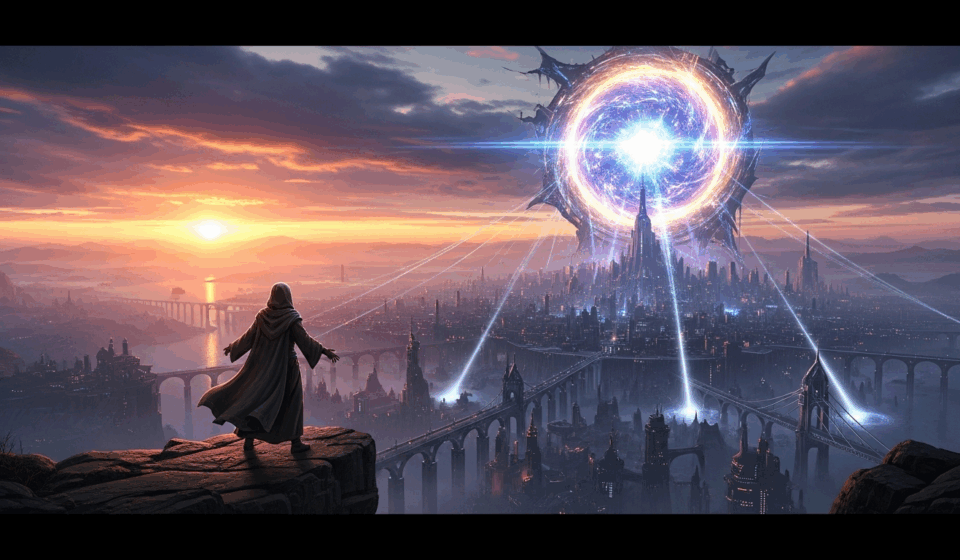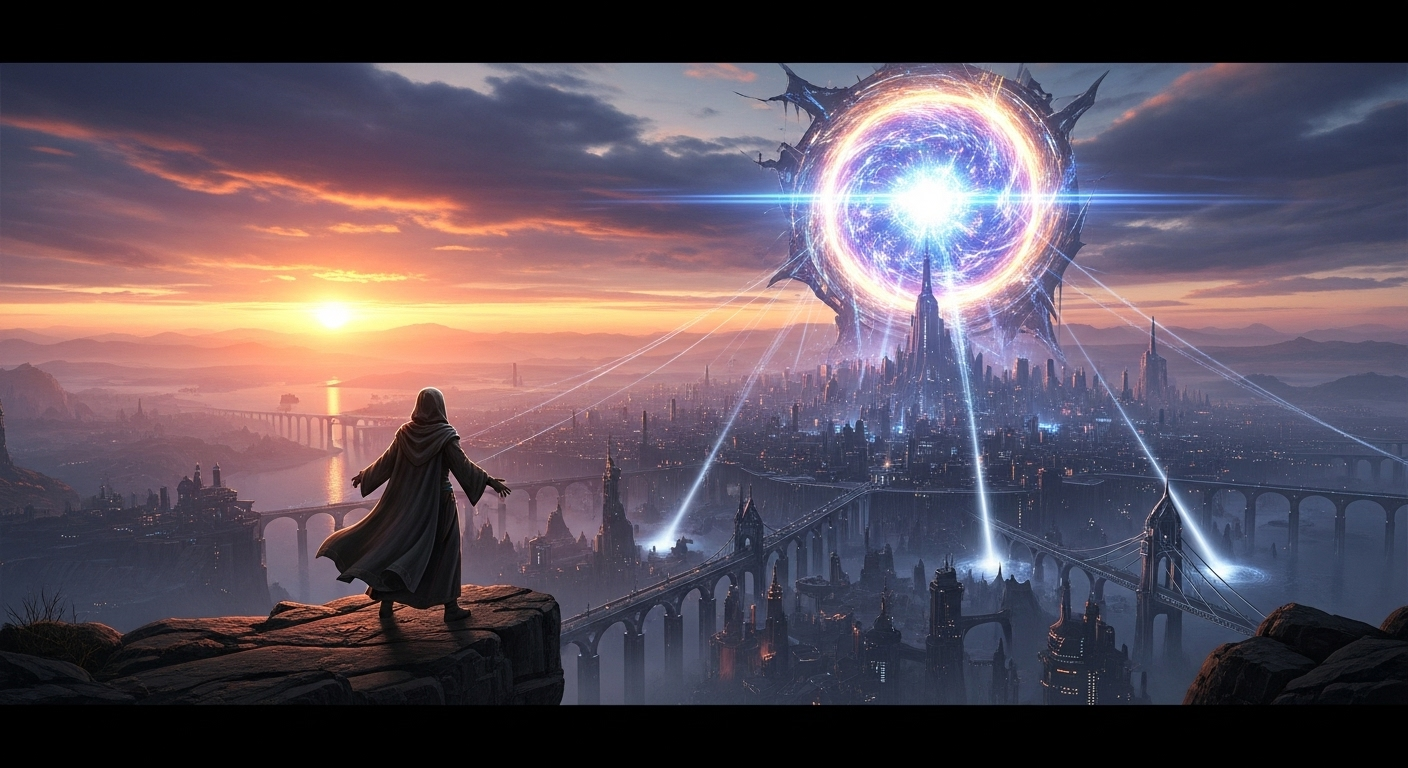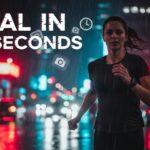
Beyond “Cyberpunk”: 6 AI Art Prompts to Master Cinematic Storytelling
Beyond “Cyberpunk”: 6 AI Art Prompts to Master Cinematic Storytelling
Anyone can type “a cyberpunk city in the rain” into an AI image generator and get a decent result. But that’s not art; it’s a template. The difference between a generic AI image and a stunning piece of visual storytelling lies in one word: cinematography.
Table Of Content
- The Core Principles of Cinematic Prompts
- Prompt 1: The “Emotional Close-Up” (Intimacy & Bokeh)
- Prompt 2: The “Epic Establishing Shot” (Scale & Atmosphere)
- Prompt 3: The “Tense Confrontation” (Dutch Angle & Unease)
- Prompt 4: The “Hero’s Silhouette” (Mystery & Backlighting)
- Prompt 5: The “One-Point Perspective” (Order & Obsession)
- Prompt 6: The “Action Shot with Motion Blur” (Dynamic Movement)
- Conclusion: Direct Your AI
To create images that feel like they’re frames from a blockbuster movie, you need to stop thinking like a prompter and start thinking like a Director of Photography (DoP). This means mastering the language of cameras, lenses, lighting, and composition. A single well-placed keyword about a “50mm lens” or “anamorphic lens flare” can do more for your image than a paragraph of descriptive adjectives.
This article will teach you 6 advanced, “camera-first” prompts for AI art generators like Midjourney, DALL-E 3, and Stable Diffusion. These prompts are designed to give you precise control over the mood, emotion, and narrative of your images.

The Core Principles of Cinematic Prompts
Before we dive in, remember these key components that make an image “cinematic”:
- Lens Choice: A wide-angle lens (like 24mm) distorts reality and creates scale. A telephoto lens (like 85mm or 135mm) compresses the background, creating beautiful bokeh and intimacy.
- Lighting: Don’t just say “lighting.” Say “Rembrandt lighting,” “rim lighting,” “golden hour,” or “chiaroscuro.” Be specific about the light’s source and quality.
- Camera Angle: A “low-angle shot” makes the subject powerful. A “high-angle shot” makes them vulnerable. A “Dutch angle” creates unease.
- Color Grade: This is the final mood. “Bleach bypass color grade” creates a gritty, desaturated look. “Teal and orange” is the classic blockbuster palette.
Let’s put these principles into practice.
Prompt 1: The “Emotional Close-Up” (Intimacy & Bokeh)
This prompt is designed to create an intimate, character-driven shot where the background melts away, forcing the viewer to connect with the subject’s emotion.
Extreme close-up shot of a young woman's face, tears welling in her eyes.
Shot on 85mm prime lens at f/1.4.
Shallow depth of field, with soft, creamy bokeh blurring the background city lights.
Cinematic lighting: a single soft key light from the side, casting gentle shadows (chiaroscuro).
Face is in sharp focus, capturing the texture of her skin and the reflection in her eyes.
Muted, desaturated color grade with a cool blue tone.
Captured from a slightly low angle to emphasize emotion.
Why this works: Specifying the `85mm prime lens at f/1.4` is the key. This tells the AI *exactly* how to render the depth of field. The lighting (`chiaroscuro`) and color (`cool blue tone`) keywords work together to build a somber, emotional mood.
Prompt 2: The “Epic Establishing Shot” (Scale & Atmosphere)
This prompt creates a massive, breathtaking landscape or cityscape that establishes the world of your story. It’s all about making the viewer feel small and awestruck.
Ultra wide-angle establishing shot of a futuristic city built inside a giant canyon.
Shot on 14mm wide-angle lens, capturing the immense scale.
Dramatic, low-angle perspective from a cliff edge, looking down.
Atmospheric perspective: thick fog and volumetric god-rays streaming from the clouds above.
Cinematic color grade: strong teal and orange tones.
Tiny, silhouetted human figures stand on the cliff, emphasizing the city's massive scale.
Anamorphic lens flare from the setting sun.
Why this works: The `14mm wide-angle lens` creates the feeling of scale. Keywords like `atmospheric perspective`, `volumetric god-rays`, and `anamorphic lens flare` are all professional cinematography terms that the AI understands and uses to add realism and drama.
Prompt 3: The “Tense Confrontation” (Dutch Angle & Unease)
This prompt is perfect for creating a sense of tension, conflict, or psychological unease. The “Dutch angle” (tilting the camera) is a classic technique to make the viewer feel off-balance.
Medium shot of two detectives in a dimly lit interrogation room.
Dutch angle camera tilt, creating a sense of unease and tension.
High-contrast, hard lighting from a single overhead bulb, casting deep shadows over their faces.
One detective leans aggressively on the table, the other watches from the shadows.
Shot on a 35mm lens, capturing the claustrophobic feel of the room.
Gritty, bleach bypass color grade, desaturated colors, deep blacks.
Visible cigar smoke hanging in the air.
Why this works: The `Dutch angle camera tilt` is the primary instruction. It’s supported by `hard lighting`, `deep shadows`, and a `bleach bypass color grade`—all of which combine to create a classic film noir or thriller atmosphere.
Prompt 4: The “Hero’s Silhouette” (Mystery & Backlighting)
This prompt creates a powerful, mysterious image by placing the subject in front of a bright light source, turning them into a silhouette. It’s perfect for character introductions or dramatic reveals.
Full-body shot of a lone warrior, silhouetted against a massive, glowing portal.
Strong backlit composition.
Cinematic rim lighting defines the character's shoulders and weapon.
Subject is standing in a cavern, a low fog covering the ground.
Camera is placed at a low angle, making the warrior look heroic and imposing.
Vibrant, magical blue and purple light emitting from the portal.
No detail visible on the character's face, only their outline.
Why this works: Using `silhouetted` and `strong backlit composition` as the core instructions tells the AI to prioritize the light source over the subject’s details. The `rim lighting` keyword is a professional touch that ensures the silhouette isn’t just a flat black shape, but has a defined edge.
Prompt 5: The “One-Point Perspective” (Order & Obsession)
Made famous by Stanley Kubrick, this prompt creates a perfectly symmetrical image that draws the viewer’s eye to a central vanishing point. It can feel obsessive, orderly, or surreal.
One-point perspective shot looking down a long, ornate hotel hallway.
Symmetrical composition, perfectly centered.
The vanishing point is a bright door at the far end of the hall.
Repetitive patterns in the wallpaper and carpet create leading lines.
Shot on a 24mm lens to exaggerate the perspective and length of the hallway.
Eerie, sterile lighting from overhead fixtures.
In the style of a Stanley Kubrick film.
Prompt 6: The “Action Shot with Motion Blur” (Dynamic Movement)
This prompt captures a sense of speed and chaos by intentionally adding motion blur. This is key for making static images feel dynamic.
Dynamic low-angle panning shot of a woman sprinting down a rainy, neon-lit street at night.
Action shot with motion blur on the background, keeping the woman's face relatively in focus.
Shutter speed effect: 1/30th of a second.
Raindrops frozen in the air by high-speed flash sync.
Reflections of neon signs in the wet pavement.
Cinematic, high-contrast lighting with vibrant pink and blue neon glows.
Why this works: `Panning shot`, `motion blur`, and `shutter speed effect` are the magic words. They instruct the AI to simulate the real-world physics of a camera moving to track a fast-moving subject, creating a truly dynamic image.
Conclusion: Direct Your AI
The next generation of AI art is not about *what* you generate, but *how* you generate it. By embedding the language of cinematography and photography into your prompts, you gain an incredible new level of control. Stop being a passive user and start being the director of your own AI-generated films.
Tags: Midjourney Prompts, Stable Diffusion, Cinematic Lighting, Visual Storytelling, DALL-E 3, Concept Art






